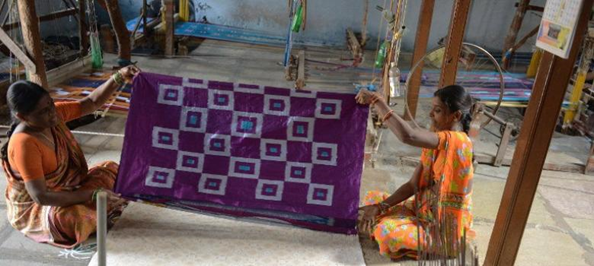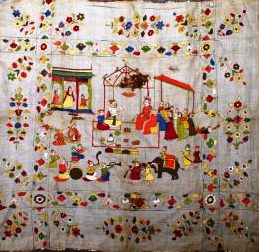
Each hand-woven product tells a story: Why we must fight changes in the Handloom Act
Tyabji, Laila
September, 2023
 Noah Seelam/AFP
All over social media these days, people are making 100 Sari pacts to wear the elegant garment at least 100 times this year. It's a curious sad irony that, just as so many women seem to be rediscovering the sari, the government seems bent on putting an end to its handloom incarnation.
A move is on to repeal The Handloom Reservation Act, which since 1985 has been protecting traditional handloom weaves, especially saris, from being copied by their machine-made and powerloom competitors. It was a small but important protection for handloom weavers, who otherwise struggle to survive. Their yarn, their designs and their markets are under attack.
Now the powerful powerloom lobby is agitating to have this Act withdrawn. Meetings and consultations have been held, largely without the inclusion of handloom-sector representatives, and our representations and queries have gone unanswered.
One powerloom lobbyist at the meeting allegedly said that "we have progressed from the firewood chula to gas and electric stoves. If we need to hang on to technologies from our grandparents times, it is a mark of regression. Our children will laugh at us." Another claimed that "the customer prefers cheaper powerloom sari".
We need to challenge the statement that handloom is not viable in the market. This ignores the facts. Obviously the market has shifted from rural to urban, but it is a growing one, and we have figures...
Noah Seelam/AFP
All over social media these days, people are making 100 Sari pacts to wear the elegant garment at least 100 times this year. It's a curious sad irony that, just as so many women seem to be rediscovering the sari, the government seems bent on putting an end to its handloom incarnation.
A move is on to repeal The Handloom Reservation Act, which since 1985 has been protecting traditional handloom weaves, especially saris, from being copied by their machine-made and powerloom competitors. It was a small but important protection for handloom weavers, who otherwise struggle to survive. Their yarn, their designs and their markets are under attack.
Now the powerful powerloom lobby is agitating to have this Act withdrawn. Meetings and consultations have been held, largely without the inclusion of handloom-sector representatives, and our representations and queries have gone unanswered.
One powerloom lobbyist at the meeting allegedly said that "we have progressed from the firewood chula to gas and electric stoves. If we need to hang on to technologies from our grandparents times, it is a mark of regression. Our children will laugh at us." Another claimed that "the customer prefers cheaper powerloom sari".
We need to challenge the statement that handloom is not viable in the market. This ignores the facts. Obviously the market has shifted from rural to urban, but it is a growing one, and we have figures...
This is a preview. To access all the essays on the Global InCH Journal a modest subscription cost is being levied to cover costs of hosting, editing, peer reviewing etc. To subscribe, Click Here.



